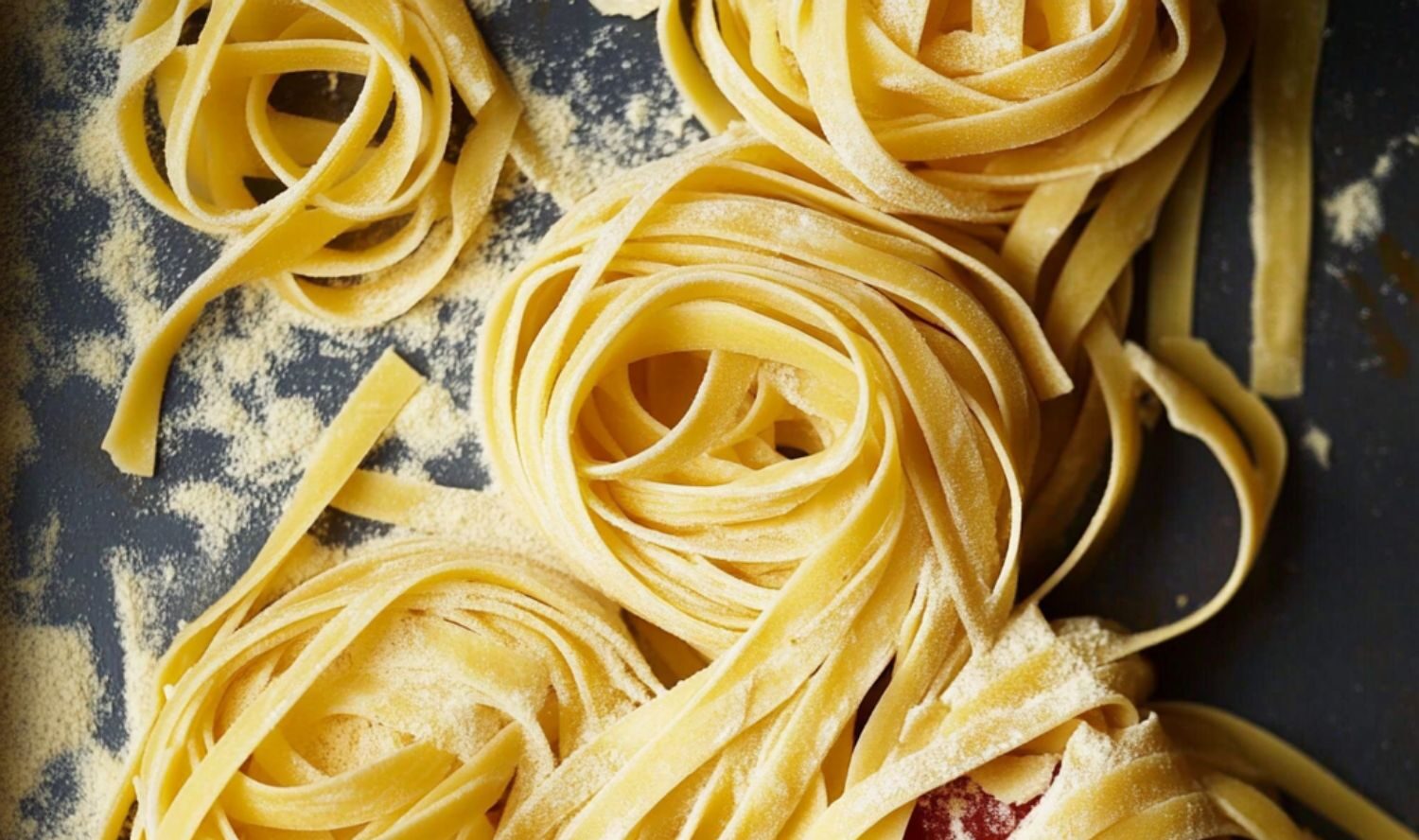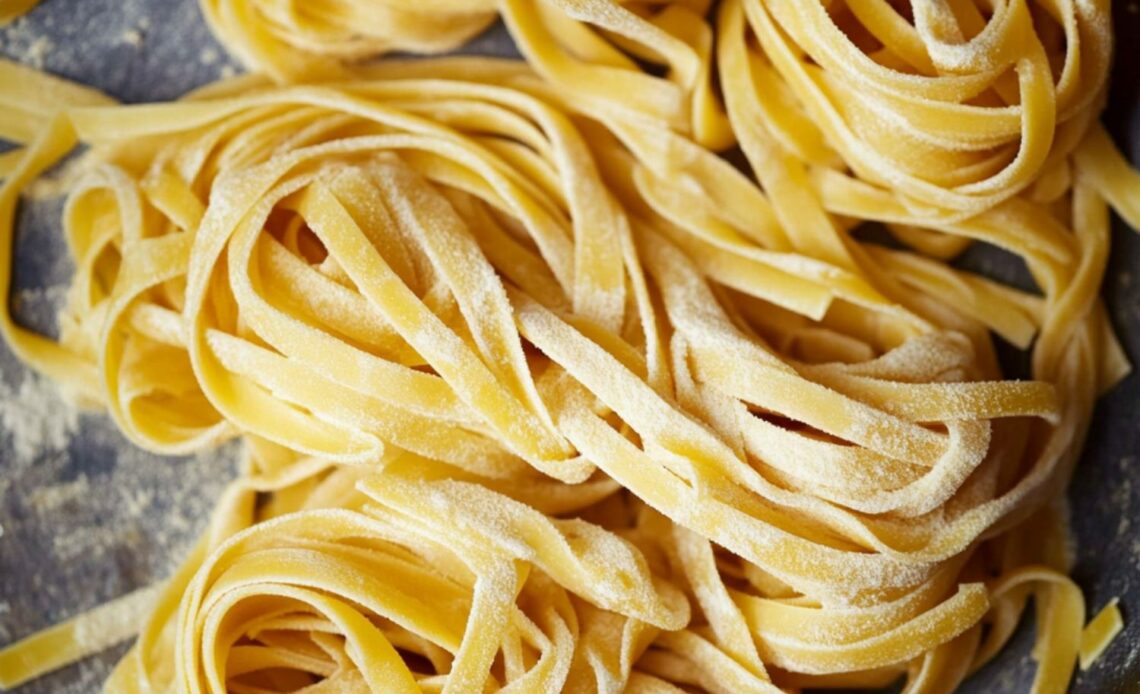
There’s something truly special about homemade pasta—the texture, the flavor, and the satisfaction of creating it from scratch. While store-bought pasta is convenient, nothing beats the freshness of rolling out your own dough. This simple yet rewarding recipe only requires four ingredients, making it an easy and versatile choice for any pasta shape.
Making pasta at home might sound intimidating at first, but it’s easier than you think. Once you run the dough through a pasta roller a few times, you’ll quickly get the hang of it. My first experience with homemade pasta was on a date with my husband, who learned the craft from his Italian grandmother. That night, I fell in love with both the pasta and the man making it!
During the pandemic, this recipe became a staple in our home. We even shared fresh pasta with our neighbors, and soon, we couldn’t go back to store-bought varieties. If you’ve never made pasta from scratch before, this guide will help you master the art in no time!
Why You’ll Love This Recipe
- Easy and Simple – Just four ingredients and a few steps to fresh, homemade pasta.
- Versatile – Works with various flours and shapes, from fettuccine to lasagna sheets.
- Rich in Flavor – Fresh pasta absorbs sauces beautifully for a perfect dish every time.
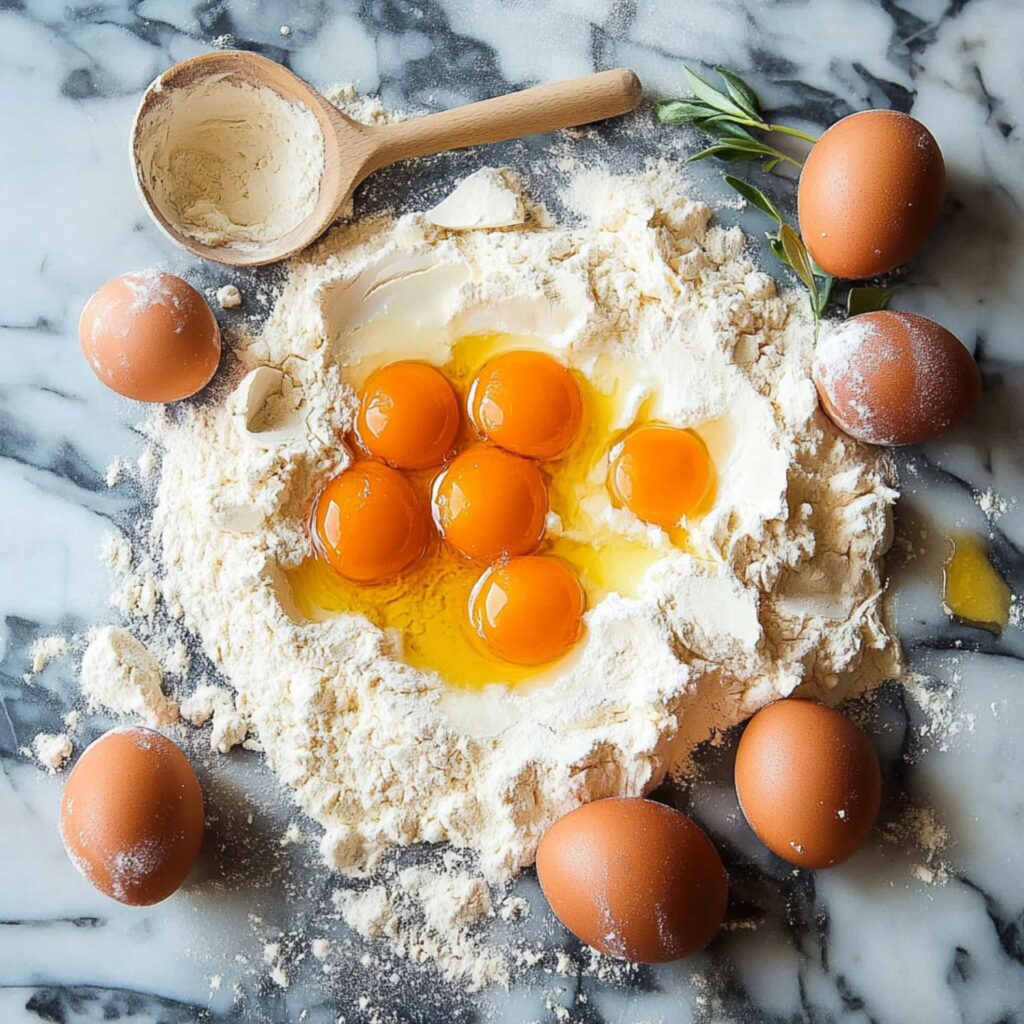
Ingredients Overview
Pasta dough is incredibly adaptable, and the type of flour you use plays a crucial role in its texture.
- All-Purpose Flour – Readily available and works well for a soft yet structured dough.
- Semolina Flour – Gives the pasta a heartier texture that holds up well in sauces.
- 00 Flour – Fine, powdery texture for ultra-smooth pasta noodles.
Using a combination of all-purpose and semolina or 00 flour creates the best balance. However, all-purpose flour alone also produces great results.
How to Make Homemade Pasta
Step 1: Prepare the Dough
In the bowl of an electric mixer fitted with a dough hook, combine the flours, eggs, olive oil, salt, and water. Mix on medium-low speed until a smooth ball forms, about 5-10 minutes. If the dough is too dry, add more water gradually.
Step 2: Knead the Dough
Transfer the dough to a lightly floured surface and knead 3-4 times until it fully comes together. Wrap tightly in plastic wrap and let it rest at room temperature for at least one hour or refrigerate overnight.
Step 3: Roll Out the Dough
Divide the dough into four equal pieces. Using a pasta roller, start at the widest setting (#1) and feed the dough through. Lightly flour as needed to prevent sticking. Fold the dough in half and roll again, repeating until smooth.
Step 4: Adjust the Thickness
Gradually adjust the pasta roller settings, rolling the dough through each thickness (from #2 to #4). Repeat each setting once before moving to the next.
Step 5: Cut the Pasta
Using a fettuccine cutter attachment, run the dough through to create noodles. Arrange on a pasta drying rack for 30 minutes, lightly flouring to prevent sticking.
Step 6: Store or Cook
Transfer the pasta to an airtight container. Refrigerate for up to 2 days or freeze for up to 2 weeks. Cook in boiling salted water for 2-3 minutes before serving with your favorite sauce.
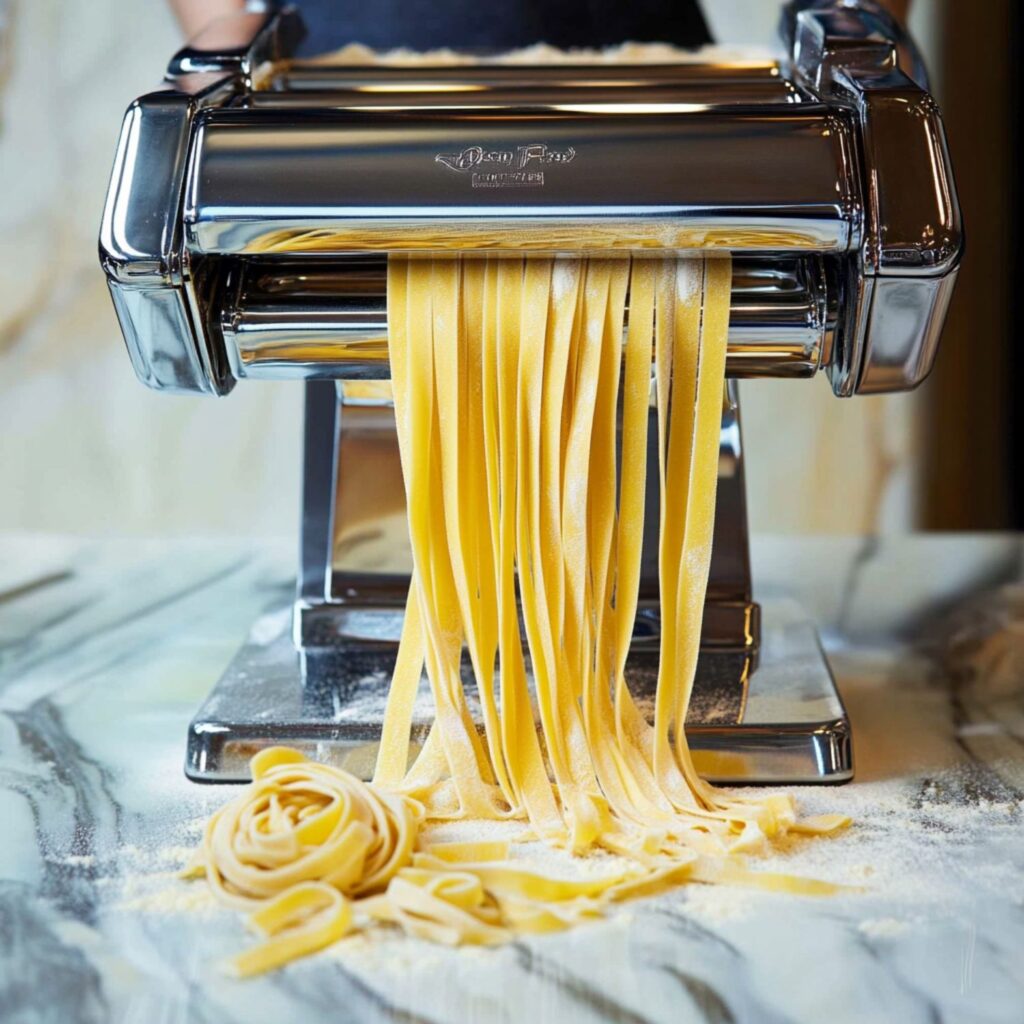
Tips for the Best Homemade Pasta
- Let the dough rest before rolling to improve texture.
- Lightly flour the dough to prevent sticking, but don’t overdo it.
- Use a pasta drying rack to keep fresh-cut noodles from clumping together.
- Fresh pasta cooks much faster than store-bought varieties—just 2-3 minutes in boiling water.
Variations to Try
- Spinach Pasta – Blend fresh spinach into the dough for a vibrant color and added nutrients.
- Herbed Pasta – Mix in finely chopped basil, oregano, or thyme for extra flavor.
- Gluten-Free Pasta – Use a gluten-free flour blend for a wheat-free option.
Frequently Asked Questions (FAQs)
1. Can I make pasta dough ahead of time?
Yes! Store the dough in the fridge for up to 24 hours or freeze for up to 4 weeks. Let it come to room temperature before rolling.
2. What’s the best way to store homemade pasta?
Fresh pasta can be stored in an airtight container in the refrigerator for up to 2 days or in the freezer for up to 2 weeks.
3. Can I make pasta without a machine?
Yes! Roll out the dough with a rolling pin until thin and cut into strips using a sharp knife.
4. Why is my pasta dough too dry?
If the dough is dry, add small amounts of water until it becomes soft and elastic.
5. How do I prevent fresh pasta from sticking together?
Lightly flour the pasta and let it dry for about 30 minutes before cooking or storing.
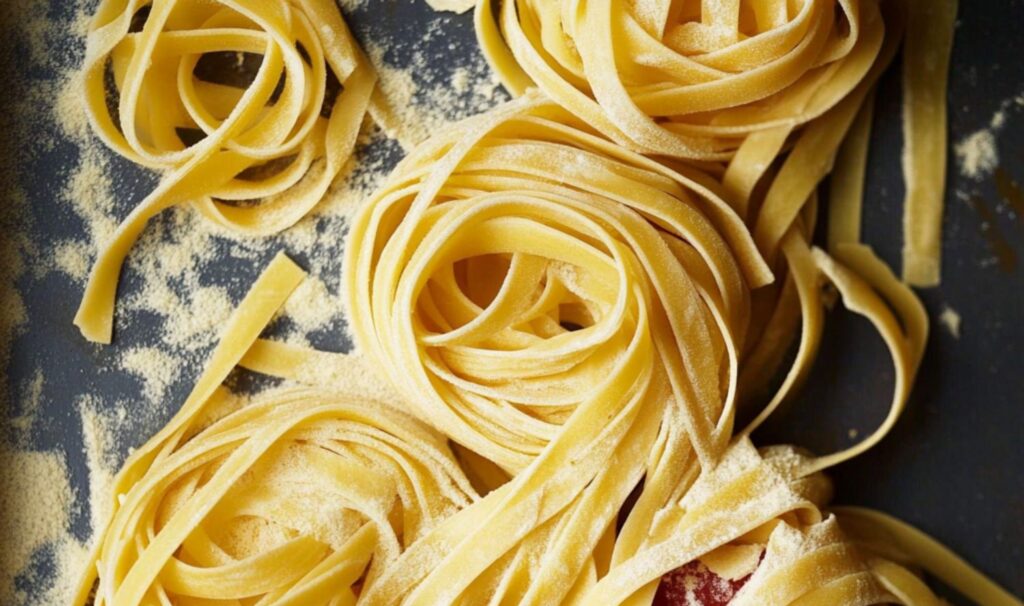
How to Store and Reheat
- Refrigerate – Store fresh pasta in an airtight container for up to 2 days.
- Freeze – Lay pasta on a baking sheet to freeze before transferring to a freezer bag. Keeps for up to 2 weeks.
- Reheat – Cook straight from frozen in boiling salted water for 2-3 minutes.
Conclusion
Homemade pasta is a game-changer in any kitchen. Whether you’re making fettuccine, spaghetti, or ravioli, the freshness and texture will elevate your dishes beyond store-bought options. With just a little practice, you’ll be rolling and cutting pasta like a pro in no time.
Give this recipe a try and experience the joy of homemade pasta. And don’t forget to follow Ava Foodie on Pinterest for more delicious recipes!


